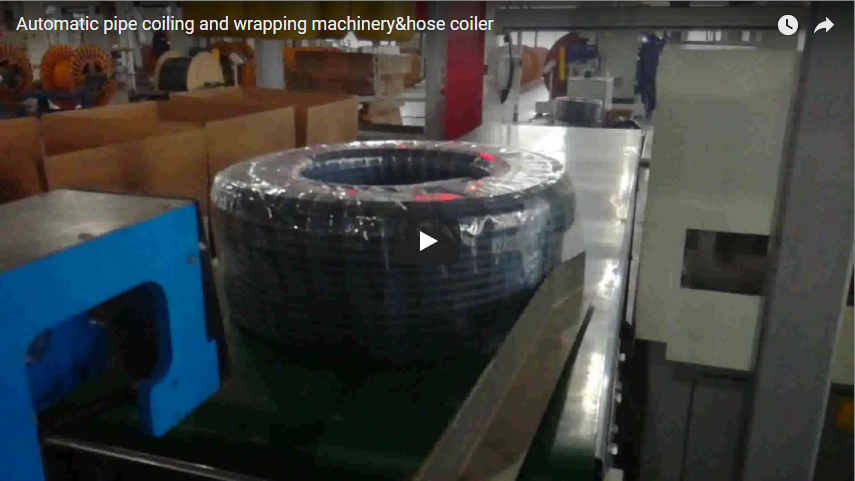Optimizing Door Packaging: Advancements in Automated Shrink Wrap Technology
In modern manufacturing and logistics, particularly within the building materials sector, the efficient and secure packaging of large, often cumbersome items like doors is paramount. Damage during transit or storage can lead to significant costs and erode customer satisfaction. Advanced automated shrink wrap systems represent a critical investment for protecting these assets, streamlining operations, and enhancing supply chain resilience. This analysis delves into the core technologies and benefits of state-of-the-art door shrink wrapping machinery, drawing insights from industry best practices and technological developments.
The Core Mechanism: High-Integrity Automated Side Sealing
The cornerstone of an effective door packaging line is the automatic side sealing unit. Moving beyond basic L-bar sealers, contemporary systems often employ continuous motion or intermittent side sealing mechanisms, as detailed in various packaging machinery patents focusing on throughput and seal quality.
- Precision Sealing: These systems utilize precisely temperature-controlled sealing elements (bars or wheels) to create durable, continuous seals along the side of the packaging film. This ensures complete enclosure, vital for protection against environmental factors like dust, moisture, and UV radiation, which can degrade door finishes over time. Research into polymer science informs optimal sealing temperatures and pressures for films like Low-Density Polyethylene (LDPE) or Polyolefin (POF), ensuring seal integrity without compromising film strength.
- Automated Operation: Full automation minimizes manual intervention, directly translating to reduced labor costs and minimized risk of repetitive strain injuries. Advanced sensors often detect product dimensions, automatically adjusting the sealing area for varied door sizes, thus reducing film waste—a key consideration highlighted in lean manufacturing studies. This capability is essential for manufacturers offering diverse product lines.
Streamlining Workflow: The Role of Integrated Conveyance
Seamless integration between packaging stages is crucial for maintaining high throughput. The transfer conveyor system within an automated shrink wrap machine plays a pivotal role.
- Smooth Transitions: Engineered for robust performance, these conveyors gently transport doors into the sealing area and onward to the shrink tunnel. Variable speed controls allow synchronization with upstream production and downstream palletizing systems. Industry publications like Modern Materials Handling frequently emphasize the importance of smooth, non-jarring conveyance for preventing product damage prior to final packaging.
- Adaptability: Conveyor systems are designed to handle the significant weight and varying dimensions of different door types (solid core, hollow core, pre-hung units). Features like non-marking belts and adjustable guides ensure product integrity and proper alignment for consistent packaging results.
Achieving Optimal Protection: Advanced Shrink Tunnel Technology
The shrink tunnel is where the protective enclosure is finalized. Applying controlled heat causes the shrink film to conform tightly to the contours of the door, creating a stable, unitized package.
- Controlled Thermal Dynamics: Modern shrink tunnels utilize sophisticated airflow and temperature regulation systems. Based on principles outlined in heat transfer research, directional vents and multi-zone heating ensure uniform heat exposure across the entire product surface. This prevents overheating, which can damage the film or door surface, while ensuring consistent shrinkage for maximum load stability and aesthetic appeal.
- Energy Efficiency: Reflecting broader industry trends reported in publications like Packaging World, newer tunnel designs incorporate enhanced insulation, energy-saving heating elements, and intelligent temperature controls that reduce power consumption during operation and standby modes, contributing to lower operational costs and improved sustainability metrics.
- Parameter Customization: Operators can precisely adjust key parameters:
- Temperature: Tailored to the specific film type (e.g., POF typically requires higher temperatures than LDPE).
- Air Velocity: Controlled to ensure efficient heat transfer without disturbing lighter products.
- Conveyor Speed: Dictates the dwell time within the tunnel, ensuring optimal shrinkage.
Quantifiable Benefits and Strategic Value
Investing in automated door shrink wrap technology yields tangible returns:
- Enhanced Product Protection: Significantly reduces instances of scratching, scuffing, moisture damage, and contamination throughout the supply chain.
- Increased Throughput: Automated systems can package doors significantly faster than manual or semi-automatic methods, boosting overall production capacity.
- Labor Optimization: Frees up personnel from manual packaging tasks for higher-value activities.
- Material Efficiency: Precise film control and automatic adjustments minimize film consumption per unit.
- Improved Presentation: A tight, clear shrink wrap enhances the perceived quality of the product upon arrival.
In conclusion, the best door shrink wrap machines integrate sophisticated side sealing, intelligent conveyance, and precisely controlled shrink tunnel technology. These systems are not merely packaging equipment; they are strategic assets that enhance operational efficiency, protect product value, and contribute to a more robust and reliable supply chain for door manufacturers and distributors worldwide.






